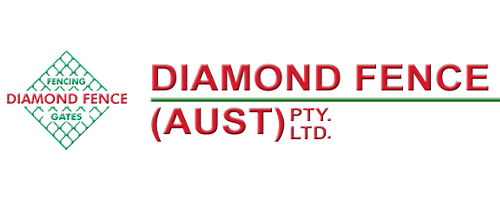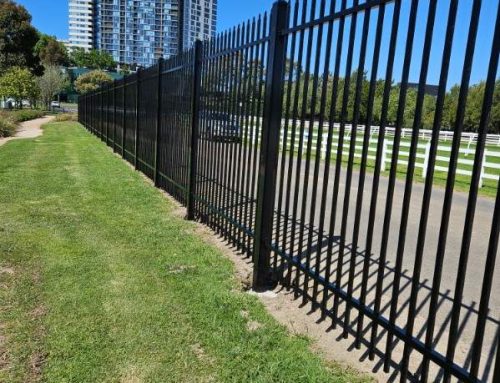Soil Types & Metal Fencing In Melbourne
Are you a gardener? Yes? No? Do you know much about soil and especially how it affects metal fencing? Yes? No? Regardless of the answer, today we’ll focus on different types of soil and how it affects metal fencing.
Since Diamond Fence is a metal fencing company based in Melbourne, then this is why we’ll be looking at different soil types in Melbourne. There’s 9 of the to be precise.
1. Red Loam
Red Loam is considered to be probably the best soils in Melbourne. It’s deep, friable and well structured and can be found in the rolling to hilly country between Silvan and Monbulk, the upper parts of the Dandenong Ranges and the hill crests at Chirnside Park.
Some of the features:
– excellent drainage
– soil digging is easy regardless if it’s dry, moist or wet
– it’s non-sticky
– shrinking and swelling is minimal
– low erodibility
2. Brown loams over clay
It can be found on the Older Basalts of the lower Mornington Peninsula. Grey brown friable loam topsoil materials overlies well-structured yellow red mottled clay subsoils.
Some of the features:
– good drainage
– good water holding capacity
– easily worked when moist
– non-sticky, but soft when wet
3. Dark grey sand over clay
Mostly located in between Kew and Mt. Waverley, and in a large triangular area bounded by Toorak, Cheltenham and Dandenong. The topsoil is a black to dark grey sand grading into light grey sand. It overlies a brown, red and gray mottled clay.
Some of the features:
– clay subsoil can impede drainage
– topsoil easily worked whether dry, moist or wet
– non-sticky
– in winter a perched watertable may occur above the clay, affecting drainage.
4. Light grey loams over clay
Found in Kew to Croydon and from Bundoora to Rowville. The topsoil consists of a light grey loam with some stones or gravel. The topsoil overlies a compact yellow brown mottled clay subsoil with small and large angular stones often found at the junction.
Some of the features:
– moderately well drained and with a moderate to low in water holding capacity
– topsoil sets hard when dry and too soft when wet, so best to work on when moist
– scattered rock fragments in the subsoil can cause problems for digging;
5. Gritty light grey loam over clay
Mostly occurs between Lysterfield and Hallam, Arthur’s Seat and Mt Martha. Consists of a light grey gritty sandy loam, or loamy sand, over mottled yellow brown and grey clay.
Some of the features:
– moderately well drained;
– low water holding capacity in topsoil
– topsoil sets hard when dry and is moderately easy to dig when moist;
– non-sticky;
– waterlogging is common on lower slopes in winter and spring;
– prone to erosion by water;
6. Dark loams, clays, local sands
Can be found in the swampy areas of Melbourne. It consists of dark loams, clays and sands.
Some of the features:
– drainage rates vary across the soil type;
– ranges from mildly acidic to neutral;
7. Deep sands free of lime
Deep grey brown sands over yellow grey, frequently with a layer of dark brown hard cemented sand , can be found in the areas from Black Rock to Brighton, and along the coast of Port Phillip Bay, as far as Rye.
Some of the features:
– rapid drainage
– very low water holding capacity
– easily worked, when wet, moist or dry;
– non-sticky;
– prone to erosion by wind;
– high water tables in some areas;
8. Deep sands with lime
Can be found in Cape Schanck and Sorrento. These sands are deep and consist of grey to whitish sand that occasionally sit on top of a lime-cemented hard pan.
Some of the features:
– excellent drainage;
– very low water holding capacity
– easily worked when wet, moist or dry;
– non-sticky
– prone to erosion by wind
9. Heavy clay on younger basalts
Found in the north-west of Melbourne, stretchig from Altona to Thomastown and from Richmond to Broadmeadows, that type of soil is generally shallow dark and reddish brown heavy clays with a thin loamy topsoil.
Some of the features:
– drainage very poor and causes water-logging in wet weather
– very hard when dry
– very sticky when wet
– slightly alkaline to slightly acidic;
– clay dries very quickly in hot weather and can develop deep cracks
Now we have an overview of what kind of soil exists in Melbourne. As you can see above, soil type basically differs by how much clay and how much sand it contains. While clay particles are fine, then sand’s grains are coarse, and either sharp or rounded. This gives the soil different feeling of texture as well if you let it slip through your fingers.
Even though we brought up the soil types in different locations in Melbourne, then you can determine your own soil type as well to me sure. Take a look how Gardeners World advises to do it.
So how does soil affect metal fencing? Well, in two ways actually. First is while installing the fence, meaning how complicated it is to get the metal fence posts into the ground and how well will they stay there, and second is how the corrosion will affect your metal fence.
The soil that your property has been built on can be either a bit more sandy, or might have more clay in it, but let’s not also forget gravel and stones that make digging a hole a bit more complicated. So if you want to install your fence yourself, then just keep that in mind that having a rocky soil might make it a bit of a hustle. But if you want a fencing contractor, like Diamond Fence, to install your fence for you, then just relax and we’ll get the job done.
But then it comes to corrosion, or how much water does the soil hold or how good is its drainage, let’s say after a heavy rain. For example the drainage of sandy soils is very good, and digging the hole during the installation is easy, but at the same time if the soil is too dry then the sides of the hole might collapse while digging the hole for metal posts.
Loamy soils are easy to work with and digging the hole in, so it makes the installation somehow an easier job to do. But at the same time the loam content gives that soil type a bit of softness influencing the stability of your fence. So keep that in mind as well.
And then we are left with soil types with higher clay content. What do we need to know about that soil type? Well, that it’s quite hard to work with clay soil because it’s dense and sticky. It’s better to work with clay soil when it’s not too wet, or totally dry, like a brick. Also it will not drain easily as clay holds water quite well. And when it dries then it can shrink and move the objects build on them, like metal fencing for instance. Yes, seems that clay soils are a bit of trouble makers.
When it comes to corrosion, then of course it’s better to have soil that has a good drainage to keep the moisture away, but it’s not like you can change the soil around your property. It is what it is, if you’re not planning to change your property of course. So it’s good to know what soil type you have, and how it affects objects built on it in different weather conditions, either during a rainy winter, or a hot summer.
But when it comes to metal fencing, then Diamond Fence can handle any kind of soil. Some soil types can just take a bit longer to work with, but the job will get done regardless.
So to find out more about how Diamond Fence can install a metal fence to your property, give us a call (03) 9753 4566 , shoot us an email on info@diamondfence.com.au , or just get a FREE online quote.








